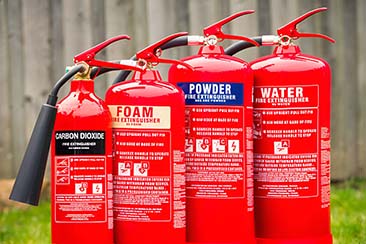While many rush to attorneys to guide them through the legal maze, some prefer or simply can’t afford to take that route. Taking matters into your own hands may seem daunting, but with the right steps, it’s feasible. This guide simplifies the process, making it approachable for everyone, whether you have prior legal knowledge or not. If it feels impossible right from the start, get in touch with a Lawrenceville personal injury lawyer and let them handle it.

Assessing Your Personal Injury Case
Often, the initial reaction after an accident is shock and confusion. Yet, it’s critical to determine if you genuinely have a viable claim. Consider the negligence aspect: was someone else’s carelessness the cause of your injury? If yes, you have a strong foundation. Keep in mind that your behavior also plays a role. If you were partially responsible, it might influence your compensation.
Having understood the negligence element, evaluate the severity of your injury. Long-term or permanently disabling injuries warrant higher compensation. Ensure you can differentiate between minor injuries and severe ones, as the latter necessitates more intensive evidence collection and preparation. Also, think about the emotional and psychological effects. Sometimes these can be more debilitating than physical ones.
Gathering Essential Documentation
Embarking on this journey, you’ll quickly realize the power of paperwork. First, medical records: a clear record of treatments, diagnoses, and bills related to the injury is invaluable. These documents validate your claims and offer a numerical foundation for compensation.
Then, focus on proof of loss. It isn’t just about medical bills; perhaps you missed work or couldn’t pursue opportunities because of your injury. Documents supporting this, like pay stubs or letters from employers, can quantify your loss. These help in painting a complete picture of the financial burdens incurred.
Lastly, gather any other crucial evidence related to your case. These might be accident reports, photos of the scene, or statements from witnesses. This compilation, though time-consuming, can make or break your claim.
Identifying Responsible Parties
Post-accident, pinpointing the culprit might seem straightforward. However, it’s not always a single entity. Multiple parties might share the blame. Recognising all of them ensures you don’t leave compensation on the table. For instance, in a car accident, it could be another driver, the manufacturer of a faulty part, or a maintenance company.
Once you’ve identified the parties, thoroughly research them. You might find past instances of negligence or malpractice, which can strengthen your stance. But always tread cautiously and avoid making unwarranted accusations.
Another consideration is the relationships between parties. Sometimes, entities have shared responsibilities or insurance policies. Comprehending these intricacies aids in navigating the legal labyrinth effectively.
Calculating Damages and Compensation
The next challenge is affixing a dollar amount to your pain and suffering. Begin by summing up economic damages: medical bills, lost wages, and other quantifiable losses. These are relatively straightforward as they have tangible evidence supporting them.
However, non-economic damages like pain and suffering or emotional trauma are subjective. Some use a multiplier method, where economic damages are multiplied by a certain number (usually between 1.5 and 5, depending on injury severity). This gives a ballpark figure. Remember, there’s no fixed formula, and each case is unique.
Lastly, don’t ignore potential future losses. Ongoing treatments, future wage losses, or prolonged emotional trauma deserve compensation. Engaging experts, like doctors or economists, can be beneficial in these estimations.

Communicating with Insurance Companies
When liaising with insurers, maintain an air of caution. They prioritise their profits and might offer a settlement far below what you deserve. Always document your communications, keeping records of calls, emails, and letters. This establishes a trail if discrepancies arise later.
Practice patience. Insurance processes can be sluggish. Rather than succumbing to frustration, use this time to fortify your evidence and understanding of the claim. This ensures you’re better equipped when negotiations begin.
Beware of quick settlement offers. They might appear tempting, but accepting prematurely can leave you under-compensated. It’s prudent to understand the full extent of your injuries and financial losses before engaging in negotiations.
Negotiating a Settlement
Before delving into negotiations, have a clear minimum settlement figure in mind. This serves as a benchmark, ensuring you don’t undersell your claim. Yet, remain flexible; rigidness can stall or collapse talks.
During discussions, emphasise the evidence. This not only reinforces the legitimacy of your claim but can also pressurise the other side into a more favourable settlement. Always stay calm and collected, even if the opposing party resorts to low-ball offers or intimidation tactics.
If talks stagnate, don’t fear the prospect of a trial. Sometimes, the mere possibility can reignite negotiations. Though trials are more demanding, they can yield higher compensations.
Preparing and Filing Your Claim
Once you’ve amassed your evidence and have a compensation figure, it’s time to formally initiate your claim. Draft a detailed, coherent demand letter outlining the accident, injuries, evidence, and compensation sought. This becomes the cornerstone of your claim, guiding future negotiations and proceedings.
After dispatching the demand letter, be prepared for a counter-response. This might be a counter-offer, a rejection, or a request for additional evidence. Stay vigilant and review every response critically, ensuring you don’t overlook any traps or pitfalls.
Following these exchanges, if a resolution isn’t on the horizon, initiate the official court proceedings. Remember to familiarise yourself with the local court rules and procedures. Each jurisdiction might have its nuances, and missing a step can jeopardise your claim.
Understanding the Statute of Limitations
This term refers to the window within which you must file your claim. It varies by jurisdiction and the nature of the injury. Missing this deadline can nullify even the most ironclad cases. So, make it a priority to determine your timeline early on.
Beyond the general timeframes, there might be exceptions. Some jurisdictions allow for exceptions if the injury isn’t immediately recognisable. But banking on exceptions is risky; it’s always safer to act sooner rather than later.
Always remain aware of this ticking clock. Even if you’re in negotiations, the statute doesn’t pause. So, even if talks seem promising, keep an eye on the calendar.
Representing Yourself in Court (If Necessary)
Self-representation, termed “pro se”, is daunting. Begin by acquainting yourself with court procedures, decorum, and any paperwork. Libraries or online resources dedicated to legal matters can be goldmines of information.
Craft a compelling opening statement, laying out your case clearly. Throughout the proceedings, focus on your evidence, presenting it logically and coherently. This builds credibility and can sway the court in your favour.
Lastly, respect the court and its officers. While emotions might run high, always remain composed. Rudeness or disrespect can tarnish your image, adversely impacting your case.








